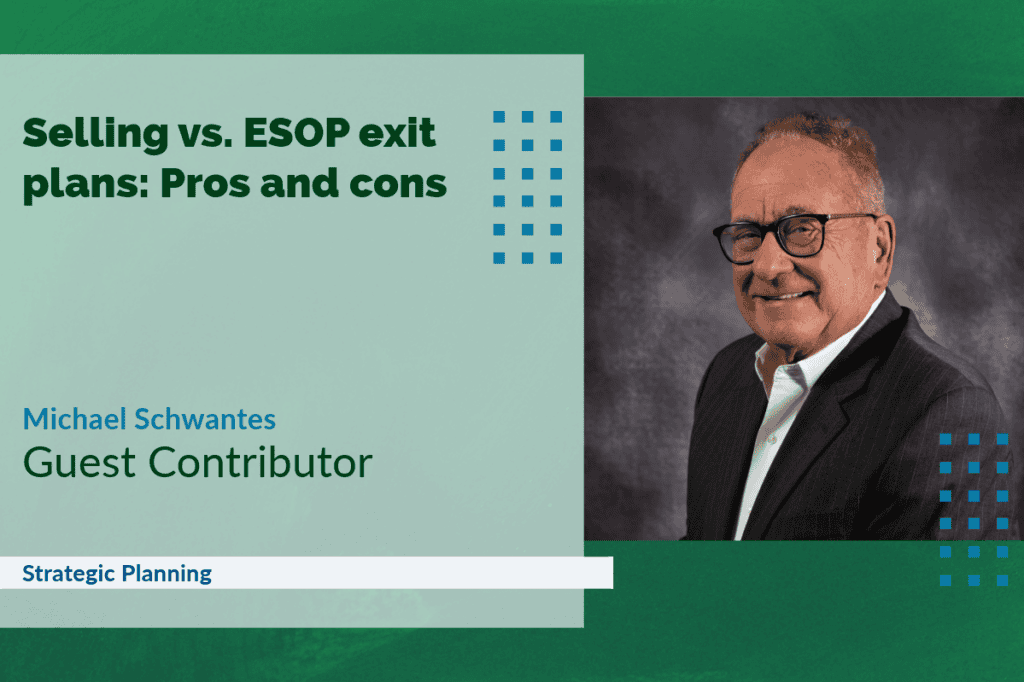
August 20, 2024
As a business owner, planning your exit strategy is one of the most critical decisions you’ll face.
Two popular options are selling your business outright or implementing an Employee Stock Ownership Plan (ESOP).
Each has its own set of benefits and drawbacks, making it crucial to evaluate which aligns best with your personal and business goals.
Understanding the basics
Selling a Business
Selling a business typically involves transferring ownership to an external buyer.
This process can be swift or lengthy, depending on market conditions and the nature of the business.
Owners often sell for various reasons, including retirement, pursuing new ventures or financial gain.
ESOP (Employee Stock Ownership Plan)
An ESOP allows employees to become partial or full owners of the company.
This plan is structured to provide employees with stock ownership, usually at no upfront cost to them.
ESOPs have gained popularity due to their potential tax benefits and the ability to preserve company culture and legacy.
Pros and cons of selling a business
Pros
- Immediate financial gain: Selling can result in a substantial lump sum, providing financial security and capital for future ventures.
- Potential for higher sale price: If market conditions are favorable, a competitive sale process can drive up the price.
- Clean break: Selling allows for a definitive end to your involvement with the business, enabling you to move on.
Cons
- Loss of control: Once sold, you relinquish all control over the business’s future direction and operations.
- Emotional impact: Handing over your business to outsiders can be emotionally challenging, especially if you have a strong attachment to it.
- Impact on employees: The new owner’s priorities may differ, potentially affecting job security and company culture.
Pros and cons of ESOP exit plans
Pros
- Continued legacy: ESOPs allow the business to continue under the same values and culture, preserving your legacy.
- Tax benefits: Both the seller and the company can enjoy significant tax advantages, making it a financially attractive option.
- Employee morale and productivity: Ownership can boost employee engagement and productivity, as they have a direct stake in the company’s success.
- Flexibility: ESOPs can be structured gradually, allowing for a phased transition and continued involvement.
Cons
- Complexity and cost: Setting up and maintaining an ESOP can be complicated and expensive, requiring legal and financial expertise.
- Lower immediate financial return: The financial gain from an ESOP may be less immediate and potentially lower than an outright sale.
- Ongoing involvement: You may need to stay involved in the business during the ESOP transition, which might not align with your immediate plans.
Comparative analysis
- Financial considerations – Selling your business offers immediate financial rewards, which can be ideal if you seek quick capital. However, an ESOP might provide long-term financial stability through tax benefits and a structured buyout, potentially leading to better financial outcomes over time.
- Control and legacy – If maintaining control and preserving your business’s legacy is crucial, an ESOP is a favorable option. It allows you to instill your values and ensure the company continues to operate with the same ethos. In contrast, selling means giving up all control, and the new owner may take the business in a different direction.
- Employee impact – ESOPs generally have a positive impact on employees, enhancing job security and morale by giving them a stake in the company. Selling, however, can introduce uncertainty for employees, as new ownership might bring changes in management and operational priorities.
- Tax implications – Both options have distinct tax implications. ESOPs often come with significant tax benefits for both the seller and the company. In contrast, selling outright might result in a higher immediate tax liability, but it provides a clean financial break.
- Case studies – Consider businesses that have successfully navigated both paths.
- Decision-making process – Choosing the right exit strategy requires a thorough evaluation of your personal goals, financial needs and business objectives. Consulting with financial advisors, legal experts and other stakeholders is crucial to making an informed decision that aligns with your vision.
Conclusion
Both selling and ESOPs present viable exit strategies – each with unique advantages and challenges.
Carefully consider your priorities, consult with experts and evaluate the long-term impact on your financial security, legacy and employees.
The right choice will pave the way for a successful and satisfying transition from your business.
 Built on safety, powered by people
Built on safety, powered by people Kundinger Inc. partners with AUBO Robotics USA
Kundinger Inc. partners with AUBO Robotics USA








